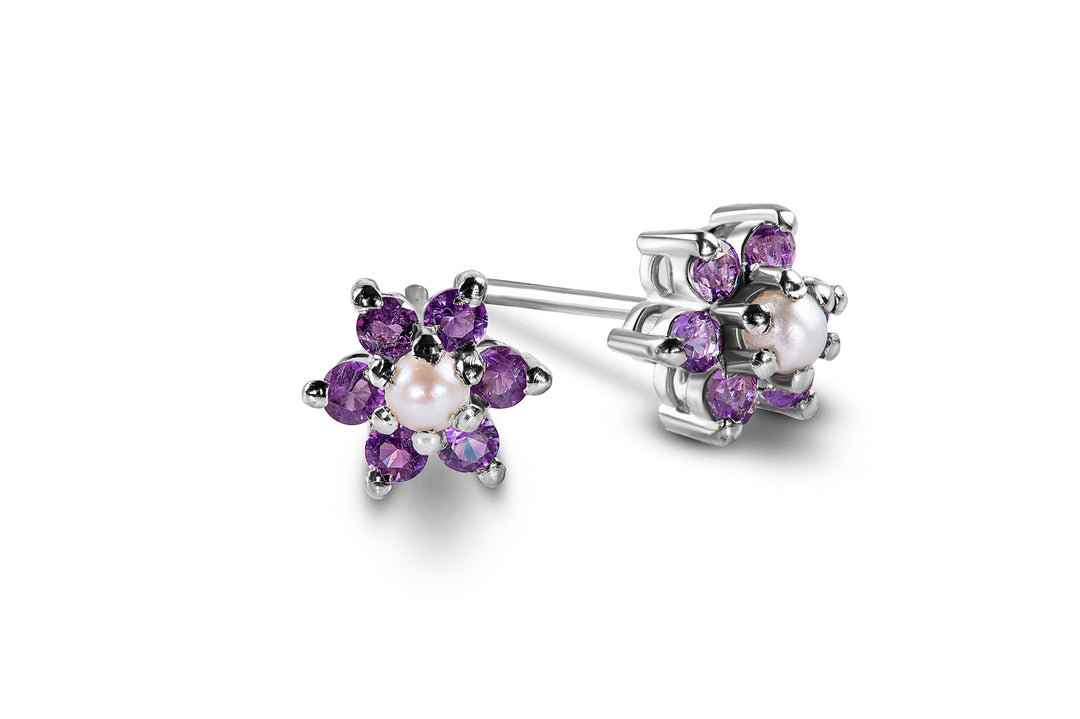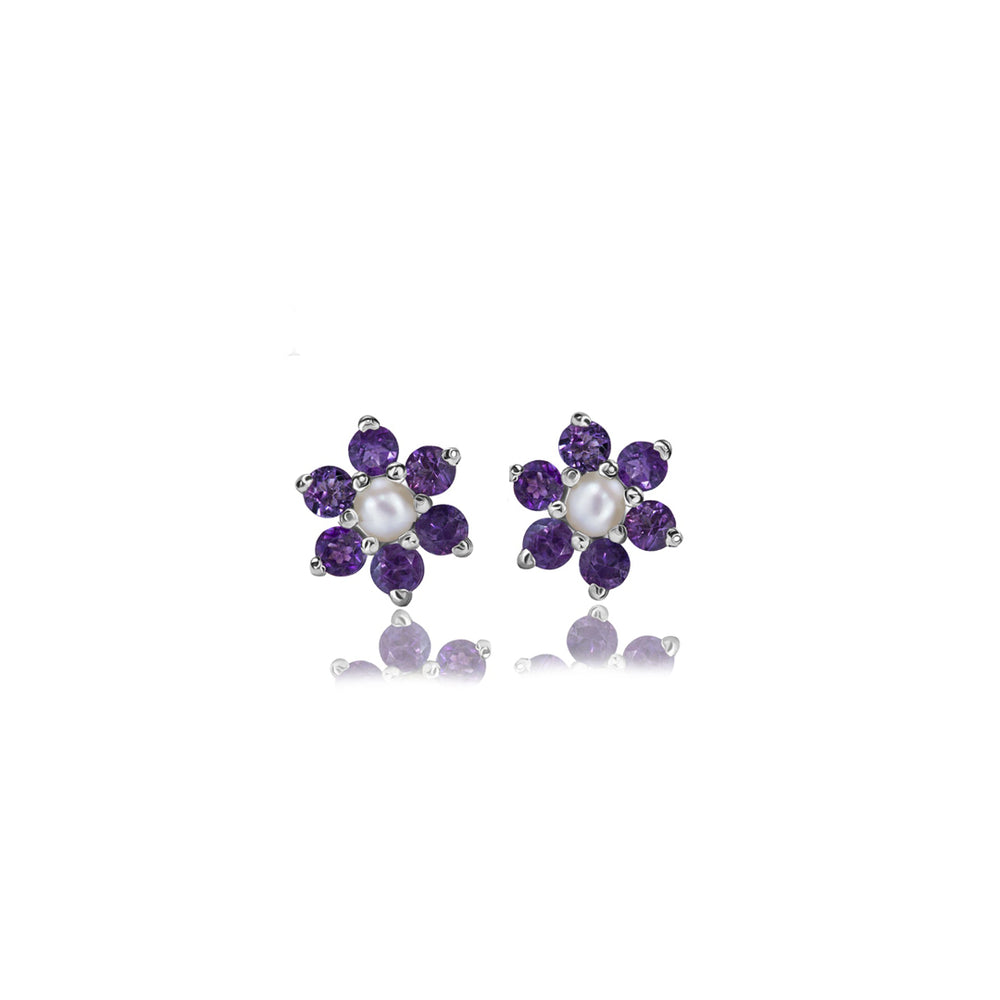KHAZANA-E-JAMUNI
Introducing the "KHAZANA-E-JAMUNI" Collection by Zanvari Fine Silver Jewelry, a breathtaking assemblage of elegance and mystique, meticulously crafted for the connoisseur of fine adornments. At the heart of Zanvari's ethos is the commitment to authenticity and artisanal excellence, presenting a range of amethyst ear studs and earrings that embody the brand's dedication to 100% original and natural gemstones. Each piece in the "Luminous Amethyst" Collection is handmade with the finest 925 silver, providing a perfect canvas for the vibrant hues and unique allure of amethyst.
THE SPECTRUM OF PURPLE
The color of amethyst can vary significantly, from the palest lilac to the deepest royal purple.
INCLUSIONS/INTERNAL FACTOR
The variations in amethyst stones are a testament to nature's artistry. Each stone tells a story of its journey through time, from its formation in the earth's crust to its final cut and polish. For collectors and jewelry lovers, these variations are not flaws but are celebrated as the signatures of nature that make each piece unique.
-
Fluid Inclusions: These are cavities within the crystal that contain liquid, often water, which may have been trapped during the crystal's formation. Fluid inclusions can sometimes create a unique effect when they reflect light.
-
Gas Bubbles: Similar to fluid inclusions, gas bubbles can be trapped within the crystal structure. These are less common but can be seen as small, round voids within the stone.
-
Solid Inclusions: Minerals that were present in the surrounding rock can become enclosed within the amethyst as it forms. These can appear as small crystals or flecks of color within the gemstone, adding to its uniqueness.
-
Feather Inclusions: These are fractures within the stone that resemble the fine structure of a feather. While they can be considered flaws in terms of gem quality, they can also create interesting visual effects and patterns.
-
Growth Lines: As an amethyst crystal grows, it may undergo changes in growth conditions, resulting in lines within the stone that mark these stages. These growth lines can add to the stone's visual appeal by creating patterns that reflect its natural history.
Understanding and appreciating the inclusions in amethyst involves recognizing the natural processes that form these gemstones. Rather than viewing inclusions solely as imperfections, they can be appreciated as features that contribute to the gemstone's individual story and natural beauty
BLEMISH/EXTERNAL FACTOR
Blemishes on amethyst, as with any gemstone, refer to external imperfections that affect the surface of the stone. These blemishes can occur naturally or as a result of the gemstone's interaction with its environment, including the cutting, polishing, and setting processes.
-
Scratches: These are linear marks that can occur through wear and tear or during the cutting and polishing process. While minor scratches can often be polished out, deeper scratches may significantly affect the stone's appearance.
-
Chips: Small pieces can be chipped off the amethyst at its edges or facets if it is knocked against a hard surface. Chips can detract from the gemstone's beauty and may require re-cutting or polishing to repair.
-
Abrasions: These are worn areas on the gemstone's surface or along its facets' edges, usually resulting from regular wear. Abrasions can make the stone appear dull and may affect its sparkle.
-
Fractures: External force can sometimes cause cracks on the surface of the amethyst, which are referred to as fractures. These can vary in severity and may compromise the structural integrity of the gemstone if severe enough.
-
Pits: Small, crater-like indentations on the surface of the amethyst can occur naturally or as a result of the gemstone coming into contact with corrosive substances.










